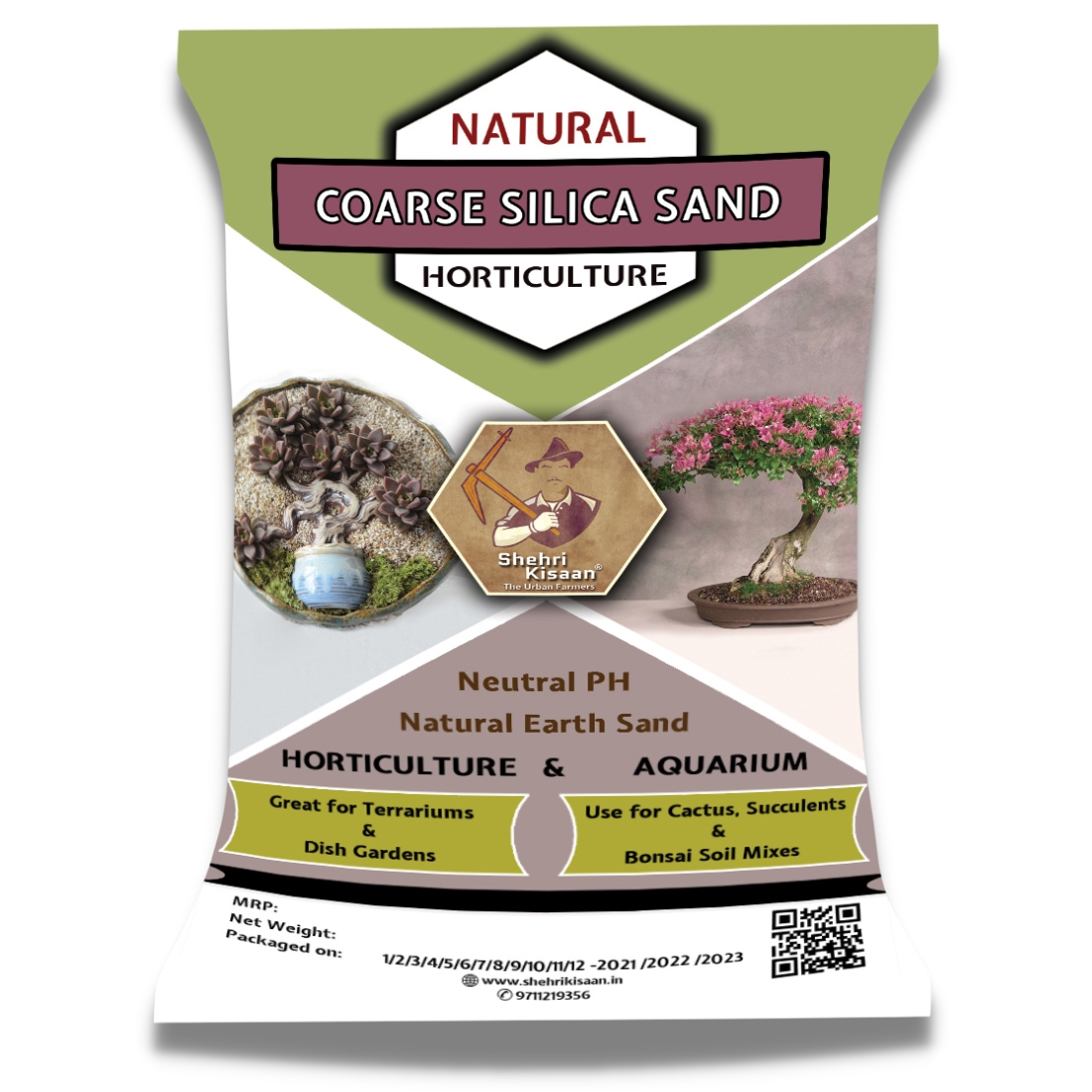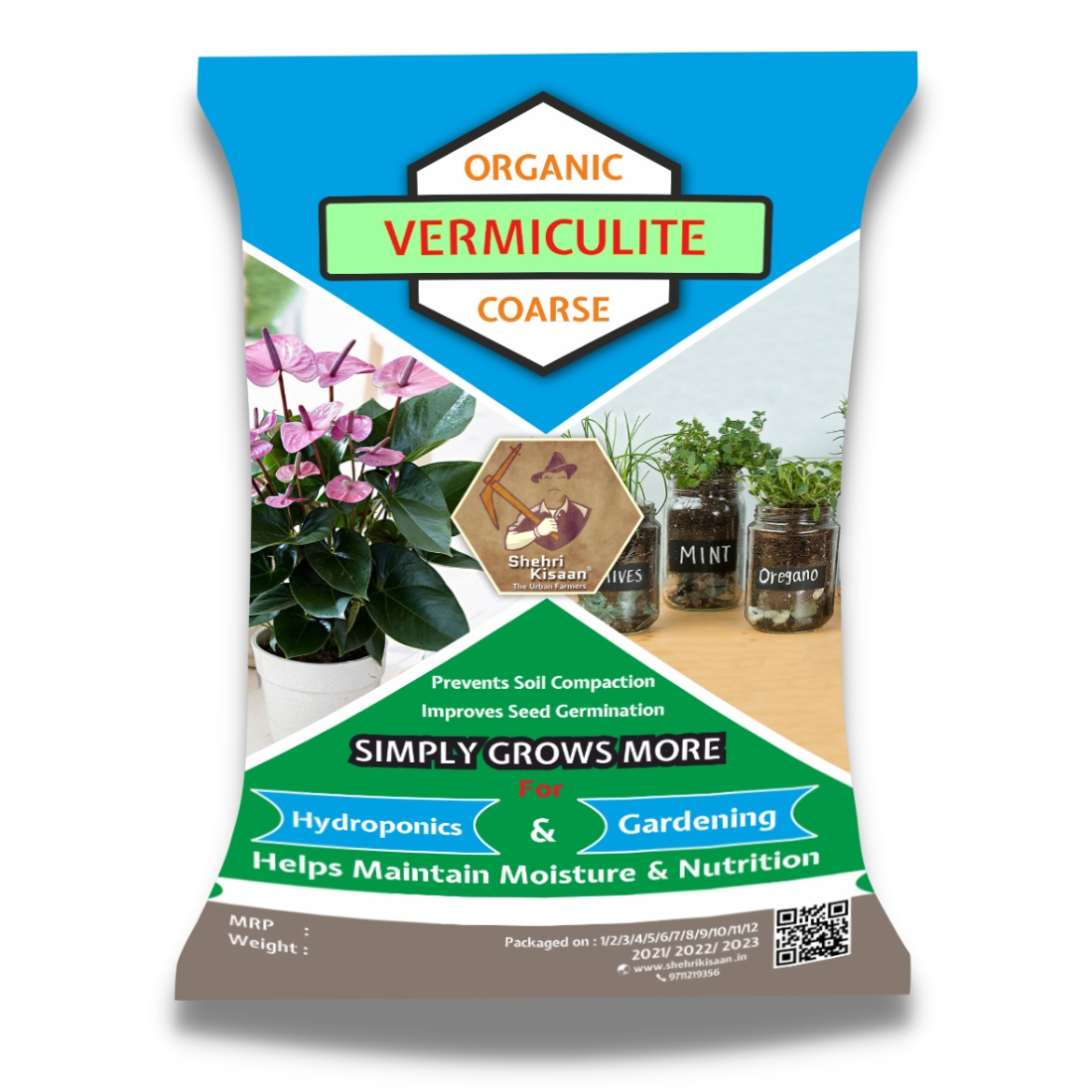-36%
Leca Clay Balls for Plants: Perfect for Cacti, Succulents, Orchids, Hydroponics & DIY Potting Mixes | 2 – 8, 8 – 15 & 15 – 30 mm
₹400.00 – ₹1,159.00
Expanded Clay Aggregate (Leca Clay Balls) is an eco-friendly product made from natural clay, heated to high temperatures to form lightweight, round balls with a porous texture. Leca balls have become a popular choice among plant enthusiasts due to their multiple uses in gardening, particularly in hydroponics, orchids, succulents, and home gardening.
From improving soil aeration to providing excellent drainage in potting soil mixes, Leca balls are an essential item for those looking to optimize their plant care routines.
Please select SIZE and then WEIGHT to get option to Add to Cart.
For Bulk Orders, you can contact through WhatsApp
SKU: N/A
Category: Soil Amendments
Tags: bioil leca balls to sink, boiling leca balls to sink, buy leca balls, clay balls hydroton leca, does boiling sink leca clay balls, growing basil leca balls, growing mint in leca balls, growing syngonium in leca balls, how to make leca balls, how to use leca balls, indoor plants in leca balls, leca ball hydroponics, leca balls, leca balls amazon, leca balls australia, leca balls bulk, leca balls for houseplants, leca balls for orchids, leca balls for plants, leca balls for succulents, leca balls ikea, leca balls in india, leca balls india, leca balls international price, leca balls makina, leca balls near me, leca balls pune, leca balls whole sale price, leca balls wholesale price, leca clay balls, leca clay balls basavanagudi, semihydroponics badil leca balls, semihydroponics basil leca balls, white flies in leca balls
LECA Clay Balls for Plants
Using LECA Balls for Indoor Plants
LECA also known as Lightweight Expanded Clay Aggregate is a popular choice among indoor gardeners. This growing medium, composed of baked clay balls, offers a lot of benefits for plant growth particularly for those looking to enhance their indoor plant care and aesthetics.
Lets read about what LECA is and how to use it effectively. Its advantages for different types of plants which includes orchids, Home Plants, Succulents, Cacti. We shall also compare LECA with other growing mediums such as Hydroton.
What Exactly is LECA (Light Expanded Clay Aggregate) and How is it Used for Plants, Is Leca Useful for Plants?

A Clay Balls – What Exactly is Leca?
LECA stands for Lightweight Expanded Clay Aggregate and it refers to small porous clay balls that have been heated as a result of which they are expanded to create a lightweight growing medium. These clay balls are useful for plants and also provide excellent drainage and aeration properties.
LECA doesn’t contain any harmful chemicals which makes it a safe choice for growing plants indoors. The structure of LECA balls allows them to retain moisture while simultaneously promoting soil aeration which is essential for healthy root development.
How to Use LECA Balls in Your Potting Mix for Indoor and Outdoor Plants
LECA (Lightweight Expanded Clay Aggregate) – HOW TO USE THEM:
- Layer of LECA: Start by putting a layer of LECA balls at the bottom of the pot. This acts as a drainage system helping to prevent water from accumulating and reduces the risk of root rot.
- Mixing with Potting Soil: You can also mix LECA balls with potting soil to prepare a well draining soil mix or use them on their own for specific plant types that flourishes in hydroponic conditions.
- Check Moisture Levels: Due to porous nature of LECA water can evaporate quickly compared to traditional soils. Check the moisture levels to ensure your plants stay hydrated.
- How to Water: To water plants in a LECA clay soil mix you just need to soak the entire pot in water, allowing the clay balls to absorb the necessary moisture. Afterwards drain any excess water to avoid overwatering.
Benefits of Using LECA as a Growing Medium to Grow your Plants
The benefits of using LECA as a growing medium are manifold. First and foremost, its lightweight nature makes it easy to handle and transport, especially for larger pots or arrangements. Additionally, LECA provides excellent drainage and aeration, which are critical for preventing issues such as root rot.
The porous structure of LECA balls allows for water retention while ensuring that the roots of the plants receive sufficient oxygen. This balance is vital for promoting healthy plant growth. Furthermore, LECA is reusable and can be cleaned and sterilized for future use, making it a cost-effective option for gardeners.
What are the Benefits of Using LECA Clay Balls for Indoor Plants?
Improved Drainage and Aeration
One of the primary benefits of using LECA clay balls for indoor plants is their ability to improve drainage and aeration. The structure of the baked clay balls allows excess water to flow freely, preventing waterlogging and ensuring that the roots of the plants receive adequate oxygen.
This is particularly beneficial for houseplants that are prone to root rot due to overwatering. By incorporating LECA into your potting mix, you create a well-draining environment that supports healthy plant growth.
Reduction of Root Rot Risk
Root rot is a common issue faced by indoor gardeners, often resulting from poor drainage and excessive moisture retention in traditional potting mixes. By using LECA, you significantly reduce the risk of root rot.
The lightweight expanded clay aggregate allows for proper airflow around the roots, which is essential for preventing fungal growth and other pests that thrive in damp conditions. As a result, plants grown in LECA are less susceptible to diseases caused by overwatering.
LECA Stands for Light Expanded Clay Aggregate – Easy to Handle Clay pebbles, Promotes Plant Grown
LECA balls are notably lightweight, making them an ideal choice for indoor gardening. Their ease of handling allows gardeners to create arrangements without the strain of lifting heavy pots filled with traditional soil. This lightweight characteristic also makes it easier to reposition plants as needed, whether for aesthetic purposes or to ensure they receive adequate light.
Additionally, the convenience of using LECA simplifies the process of repotting and maintaining indoor plants.
How to Grow Plants in LECA: A Step-by-Step Guide
Preparing Your Pot with LECA Balls
To begin growing plants in LECA, start by selecting a suitable pot with drainage holes at the bottom. Place a layer of LECA balls at the bottom of the pot, ensuring that it is thick enough to facilitate proper drainage. Next, if desired, you can mix LECA with other potting materials or use it alone, depending on the type of plant you are cultivating. When using LECA as a standalone medium, ensure that the pot is filled adequately to provide support for the roots of the plants.
Watering Your Plants in LECA
Watering plants in LECA requires a different approach compared to traditional soil. It is advisable to soak the entire pot in water, allowing the LECA balls to absorb moisture. Once the clay balls have soaked up water, drain any excess to prevent waterlogging. Monitor the moisture levels regularly, as LECA can dry out faster than conventional soil. Depending on the type of plant, you may need to adjust your watering schedule to ensure optimal hydration.
Fertilizing Plants Grown in LECA
Fertilizing plants grown in LECA is essential for providing the necessary nutrients for healthy growth. Since LECA does not contain any inherent nutrients, it is crucial to supplement with a suitable fertilizer. Liquid fertilizers can be mixed with water and applied during the watering process.
Ensure that the fertilizer is diluted appropriately to avoid over-fertilization, which can harm the plants. Regularly check the nutrient levels and adjust your fertilization routine based on the specific needs of your plants.
Positive Experiences with LECA for Orchids
Many users have reported positive experiences when using LECA for growing orchids. The excellent drainage and aeration properties of LECA make it particularly suitable for these delicate plants, which thrive in well-draining environments.
Customers have noted that their orchids exhibit healthier growth and vibrant blooms when cultivated in LECA compared to traditional potting mixes. The ability to control moisture levels effectively has also contributed to the success of orchid cultivation in LECA.
Challenges Faced by New Users of LECA
While LECA offers numerous benefits, some new users may encounter challenges when transitioning from traditional soil to LECA. One common issue is the adjustment period for understanding the watering needs of plants in LECA, as they may require different frequencies and amounts of water.
Additionally, some gardeners may find it challenging to determine the right balance of nutrients, as LECA does not provide any inherent fertilizers. However, with time and experience, many users learn to adapt their care routines to optimize plant growth in LECA.
Comparing LECA to Other Growing Mediums
When comparing LECA to other growing mediums, such as soil or Hydroton, it becomes evident that each has its unique advantages and disadvantages. LECA stands out for its lightweight nature and superior drainage capabilities, making it an excellent choice for indoor plants.
In contrast, traditional soil may retain moisture better but can lead to root rot if not managed properly. Hydroton, another popular aggregate, shares similar properties with LECA but may differ in terms of price and availability. Ultimately, the choice of growing medium depends on the specific needs of the plants and the preferences of the gardener.
Can LECA Be Used in Hydroponics and How Does it Compare to Hydroton?
Using LECA in Hydroponic Systems
LECA is increasingly being utilized in hydroponic systems due to its excellent drainage and aeration properties. In hydroponics, plants are grown without soil, relying on nutrient-rich water solutions for growth. LECA clay balls serves as a support medium for the roots while allowing for optimal water retention and aeration.
Its porous structure ensures that the roots can access the nutrients they need while preventing waterlogging, making it a valuable addition to hydroponic setups.
LECA vs. Hydroton: Which is Better for Your Garden?
When comparing LECA to Hydroton, both materials have their merits, but they cater to slightly different gardening needs. LECA is known for its lightweight nature and affordability, making it a popular choice for indoor gardeners. Hydroton, on the other hand, is often favored for its durability and ability to withstand repeated use in hydroponic systems. Ultimately, the choice between LECA and Hydroton will depend on the specific requirements of your plants and your gardening style.
Tips for Successful Hydroponics with LECA
To achieve successful hydroponics with LECA, it is essential to monitor the nutrient levels in your water solution closely. Since LECA does not provide any nutrients on its own, regular fertilization is necessary to support plant growth.
Additionally, ensure that the pH levels of your nutrient solution are within the optimal range for the specific type of plants you are growing. Regularly check the moisture levels in the LECA, as it can dry out quickly, and adjust your watering schedule accordingly. By following these tips, you can create a thriving hydroponic environment using LECA.
For a complete list of lightweight soil aggregates, do check out the following link
https://shehrikisaan.com/product-category/soil-amendments/
Frequently Asked Questions / People Also Ask
Can Leca balls be used for all types of plants?
Leca balls are particularly beneficial for plants requiring well-draining soil, such as orchids, succulents, and cacti, but they can be used for a wide range of plants.
How do Leca balls compare to other growing media?
Unlike traditional soil, Leca balls offer better drainage, aeration, and moisture control, making them ideal for hydroponics and plants sensitive to water retention.
Do I need to clean Leca balls before using them?
It’s a good idea to rinse Leca balls before use to remove any dust, ensuring good drainage and airflow for your plants.
Can Leca balls be reused?
Yes, Leca balls can be cleaned and reused multiple times, making them a sustainable option for gardening.
| size | 2 to 8 mm, 8 to 15 mm, 15 to 30 mm |
|---|---|
| weight | 1800 GM, 3600 GM, 7.8 Kg |
Be the first to review “Leca Clay Balls for Plants: Perfect for Cacti, Succulents, Orchids, Hydroponics & DIY Potting Mixes | 2 – 8, 8 – 15 & 15 – 30 mm” Cancel reply












 Home
Home  Whishlist
Whishlist  Compare
Compare  Checkout
Checkout
Reviews
There are no reviews yet.